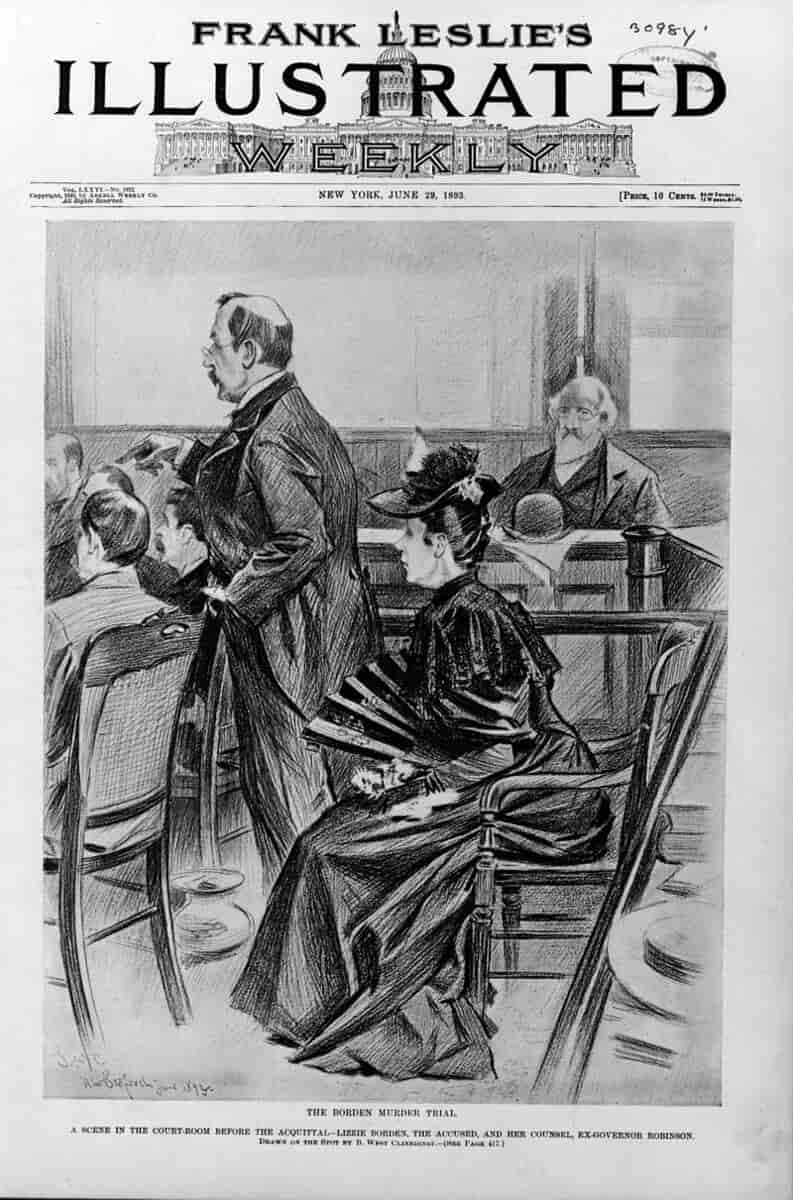Authors:
Historic Era: Era 7: The Emergence of Modern America (1890-1930)
Historic Theme:
Subject:
July/August 1992 | Volume 43, Issue 4


Authors:
Historic Era: Era 7: The Emergence of Modern America (1890-1930)
Historic Theme:
Subject:
July/August 1992 | Volume 43, Issue 4

A century ago in Fall River, Massachusetts, a jury of twelve men deliberated about one hour before acquitting Lizzie Borden of killing her father and stepmother. Lizzie’s innocence has not been so easily accepted by other people—either in 1892, when the murders were committed, or today. Since the trial people have continued to question evidence, police procedures, alibis, and strange behavior by members of the Borden household. Amateur prosecutors have put forward other suspects. Still, the evidence against Lizzie is strong enough to keep alive the speculation that she was the killer.
For many, the mystery hangs on motive. In the nineteenth century only two motives could explain her actions: jealousy and greed. Yet neither seems adequate to account for the extreme violence of the crime. Whoever killed Mrs. Borden knocked her down with the first stroke and then drove 18 other blows into her back. Approximately 90 minutes later the murderer attacked Mr. Borden as he slept, chopping his face beyond recognition. Was this merely the work of a greedy, socially ambitious young woman?
Today, looking back across a century on the events of that stifling summer day, we would be likely to ask a somewhat broader question: Why would a woman kill her father and stepmother; what was wrong with that family? Of course, all the participants are far beyond the reach of our speculation, and hence it can remain only that —speculation. But a growing body of literature on women and family violence has given us a vantage point that simply didn’t exist a hundred years ago, or even 20 years ago. And in examining distant events through the lens of the present day, we find an impressive body of circumstantial evidence to suggest, in that bloody morning’s work, the awakening rage of the incest survivor.
Although nearly everyone can recite the rhyme, many people are unfamiliar with the details of the case. Andrew Jackson Borden, seventy, and his wife, Abby, sixty-four, were respectable residents of Fall River, a mill town divided into crowded working-class neighborhoods and a fancier section for the upper classes on “the Hill.” Mr. Borden was a retired businessman who had made his considerable fortune through a combination of ruthless financial practices and fanatical thrift. With assets worth at least five hundred thousand dollars, he could well have afforded to live in the better neighborhood, but he chose to live downtown on Second Street. His wife Abby was the second Mrs. Borden. She had few friends and spent her days quietly in the home she shared with Mr. Borden’s two unmarried daughters, Emma, forty-two, and Lizzie, more than ten years younger. Lizzie